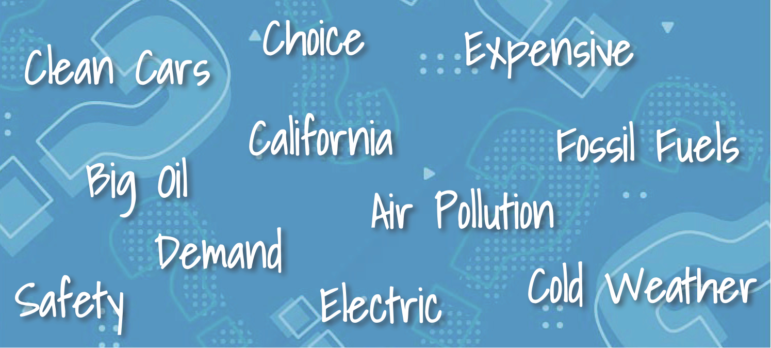
Social media, the internet, and even local newspapers are filled with a wealth of information about clean car standards and Clean Cars Minnesota. We’ve noticed at some of the information isn’t entirely accurate so our beneficial electrification team decided to set the record straight.
Anjali Bains and Margaret Cherne-Hendrick have done the hard work so you don’t have to! They sifted through social media and Letters to the Editor in Minnesota papers to find some of the most frequently shared bits of misinformation about clean cars and came up with some easy, straightforward answers that you could even copy and paste when you see similar opposition arguments.
Note: If you’re looking for a more robust explainer with lots of about Clean Cars Minnesota, check out Anjali’s blog post here.
And with that, let’s dive in!
Myth
I don’t want California bureaucrats deciding what kind of car I can drive.
Reality
Me either! And they won’t. States can choose either federal emissions standards or California’s clean car standards. Clean Cars Minnesota would do the latter, but to be clear, any changes that California makes afterwards would need to go through another rulemaking before it could take effect here.
Myth
Minnesotans don’t buy cars, they buy pick-ups like the Chevy Silverados, and they don’t make those electric.
Reality
Not quite. 40% of all vehicles registered in Minnesota are actually cars, and under clean car standards less than 8% of new vehicle sales would be electric in 2025. Even better, there are electric pick-ups coming soon, like the electric Ford F150 for those who want a cleaner electric truck.
Myth
Governor Walz is going around lawmakers to make “Clean Cars” happen.
Reality
Rulemaking is just another way to pass policy that helps and protect Minnesotans, which is why Governor Walz directed the Minnesota Pollution Control Agency to kick off Clean Cars Minnesota. What’s more, the authority for the agency pursue clean car standards comes from Minnesota statute, as passed by the state legislature.
Myth
Clean car standards will make cars less safe because they’ll have smaller frames and lighter materials.
Reality
This is an outdated myth that has been debunked. Weight doesn’t equate to safety; instead, better engineering, stronger materials, and advanced technology like air bags and anti-lock brake systems lead to safer driving experiences.
Myth
Clean Cars will limit the supply of gas-powered cars at dealerships and force them to stock electric vehicles.
Reality
Don’t worry, car dealerships will still be able to sell as many gas-powered vehicles as they want and they definitely won’t be required to sell electric vehicles. But maybe they should! A 2019 Consumer Report survey found that 66% of prospective Minnesota car buyers want more electric vehicle options.
Myth
No one wants EVs!
Reality
Not according to Consumer Reports. Their 2019 survey found that 66% of prospective Minnesotan car buyers want automakers to provide more electric options, with 30% considering purchasing an EV in the next two years.
Myth
EVs don’t work in the Minnesota because our winters are too cold.
Reality
EVs actually perform great in the winter when it comes to starting in extreme cold –unlike many gasoline-powered vehicles, EVs were able to start during the polar vortex, and their lower center-of-gravity make them easier to handle on icy roads. Plus battery range is increasing every year, new newer models going more than 200 miles on a charge – plenty to cover a typical roundtrip.
Myth
EVs are only for rich people.
Reality
Not so. More and more affordable models of electric vehicles are entering the market, and many times the total cost of ownership of an EV is lower than that of a comparable gasoline-powered vehicle. Plus other options like leasing, or buying a used EV, increase access to electric vehicle use.
Myth
Clean cars will have zero measurable impact on air pollution or the climate.
Reality
Not true. Because clean car standards would help all new vehicles emit less pollution, there are real benefits for both our health and for the climate. In a soon-to-be released report, it’s estimated that adopting clean car standards could reduce our emissions by 1 million metric tons (MMT) annually by 2030, and more than 2.5 MMT annually by 2050. And air quality improvements, even small ones, can help reduce hospitalizations and death.
If you’d like more information about Clean Cars Minnesota and how you can plug in. Tune in to the recent webinar Fact Check: Get the Truth About Clean Cars Minnesota hosted by Fresh Energy staff.
